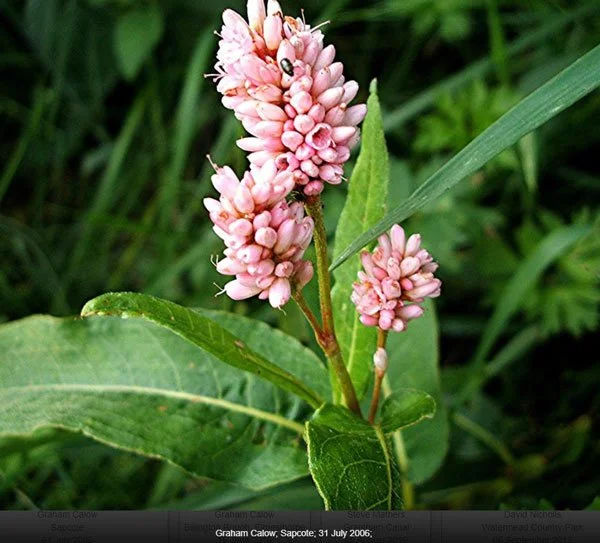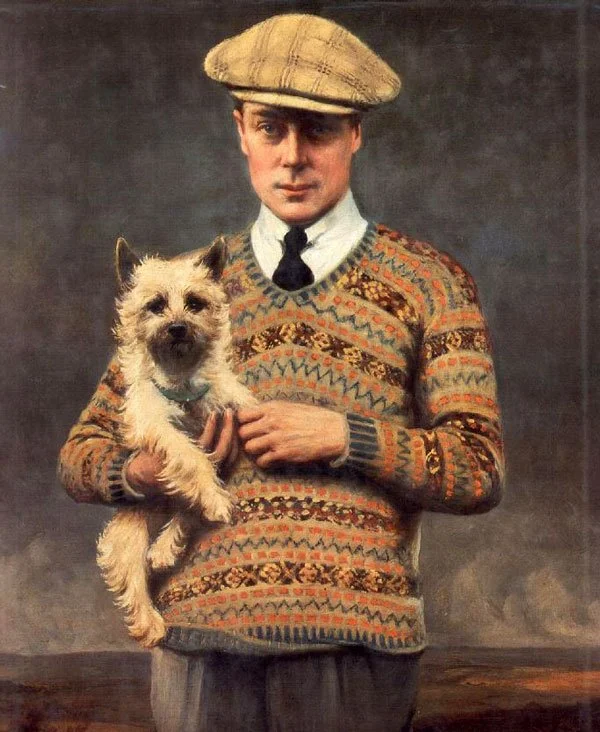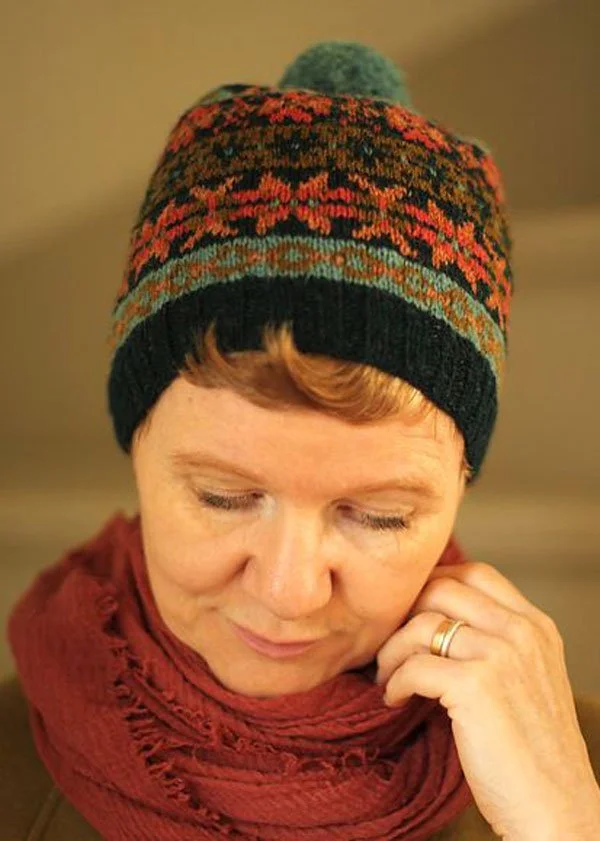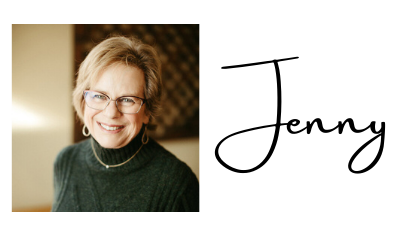A Postcard from: Fair Isle, Shetland, Scotland
This week we’ve traveled north to Fair Isle in Scotland’s Shetland Islands to learn a bit about Fair Isle knitting. Fair Isle itself is miniscule, three miles long and one and a half miles wide, has about 60 permanent residents, and is one of Britain’s most remote islands. Fun fact, Fair Isle has only had reliable 24/7 electricity since 2018!
Shetland is a collection of islands, all referred to as Shetland. People who live there speak of the largest island as ‘mainland’ or ‘mainland Shetland’. The smaller islands are called ‘the isles’. Someone from Fair Isle is said to be from Shetland unless they want to be more specific, in which case they’d be from Fair Isle, in Shetland. Are you confused yet?
The origins of Fair Isle knitting aren’t known for sure. The most likely possibility is that sometime in the late 18th century a piece of patterned knitting was bartered by a passing ship, probably from the Baltics, for fresh food and water.
Fair Isle fishermen from the 1970s
Knitters on the island began to develop what is now known as Fair Isle knitting. At first they used the natural colors of the Shetland sheep on the island, from white to browns to blacks. Later they introduced colors inspired by the natural colors of their home. They had to barter for the indigo for the blue and madder for the reds. Yellow came from a native plant, amphibious bistort.
beautiful amphibious bistort aka Water smartweed
The basic sweater design is based on Ganseys but colors and small patterns were used instead of texture. Fair Isle garments started out as hats, socks, and gloves then grew to include sweaters which were worn by men until the 1920s when women began to wear them. They became immensely popular in the 1920s when Edward, Prince of Wales wore one while golfing.
Edward, Prince of Wales
Traditional Fair Isle designs move from light to dark and back to light OR dark to light and back to dark. There are usually four to six colors total and no more than two colors used at one time. They’re knit in the round and then steeked where necessary to avoid doing colorwork on the back side of the work. The small shapes make for short floats which is another hallmark of this type of knitting.
Shetland Solstice hat, designed by Gudrun Johnston © Gudrun Johnston
The intricate designs are made of horizontal bands of common motifs: 0X0 patterns, shapes, and peeries. 0X0 patterns are lozenge shapes joined with diagonal stripes; they offer a convenient way to carry out color changes. Shapes can be anchors, ram’s horns, hearts, flowers, etc. and peeries are simplified geometric shapes inspired by nature. Often corrugated ribbing is found in Fair Isle knitting also!
Kate Davies’ Pouzle socks, note the traditional colors! © Kate Davies Designs
We are lucky to have many wonderful Fair Isle designers: Gudrun Johnston, Kate Davies, Alice Starmore, Wilma Malcolmson, Alison Rendall, Mary Jane Mucklestone, and Hazel Tindall to name a few. Their designs can be found on Ravelry!
It’s important to remember that Fair Isle knitting is a specific type of stranded knitting. Other types include but are not limited to Selbu, Setesdal, Lopapeysa, and Latvian. These, and more, fall under the umbrella of Colorwork Knitting.
Come into the shop to explore our colorwork samples and see if you can identify a Fair Isle project!
Happy knitting,







